Did you know that some talking birds, like African Grey parrots, can learn a vocabulary of hundreds of words? Or that Budgerigars have broken world records for the largest bird vocabulary? With their impressive linguistic abilities and charming personalities, it’s no wonder talking parrots have captured the hearts of many pet owners. However, the cost of acquiring and caring for these feathered companions can be a significant factor to consider.
Talking parrots’ prices can range from as low as $20 to as high as $5,000, depending on the species, age, and training level. Beyond the initial purchase price, the ongoing expenses of owning a talking bird can add up quickly. From food and housing to healthcare and entertainment, the financial commitment required to provide a suitable environment for these intelligent creatures is substantial.
In this comprehensive guide, we’ll explore the various costs associated with keeping a talking bird as a pet, helping you make an informed decision and budget accordingly. Whether you’re considering adopting a playful parakeet or aspiring to own a majestic macaw, this article will provide you with the insights you need to make an informed choice.
Key Takeaways
- Talking parrots can have a wide range of purchase prices, from $20 to $5,000, depending on the species and its characteristics.
- The initial setup and supplies for a talking parrot can cost between $300 and $1,500, including the cage, food and water bowls, toys, and other necessary equipment.
- Monthly expenses for owning a talking parrot can range from $175 to $665, covering food, grooming, healthcare, entertainment, and environment maintenance.
- Healthcare costs, including routine checkups, grooming, and potential vet visits, can add up to $50 to $100 per month.
- Factors like the parrot’s species, size, age, and training level can significantly impact the overall cost of ownership.
Introduction to Talking Birds
The allure of talking birds, particularly parrots, has long captivated the hearts and imaginations of pet owners. These feathered companions possess the remarkable ability to mimic human speech, creating a unique and engaging bond with their owners. From repeating simple words to learning entire songs, talking birds offer a level of interaction and entertainment that can be truly captivating.
The Allure of Talking Birds
The ability of talking birds to mimic human speech is a captivating and intriguing characteristic that has drawn countless individuals to these unique pets. Whether it’s a parrot reciting a favorite phrase or a cockatoo serenading its owner, the sound of a talking bird can be both amusing and endearing. The allure of talking birds lies in their capacity to seemingly converse with their human companions, fostering a sense of connection and companionship that is unmatched by many other pets.
Understanding the Commitment
While the appeal of owning a talking bird is undeniable, it is crucial to understand the level of commitment involved. Owning a talking parrot requires more than just providing food and shelter; it involves addressing their complex behavioral, environmental, and healthcare needs to ensure their well-being and your enjoyment of their company. These intelligent creatures require significant time, patience, and attention to thrive, and prospective owners must be prepared to make a long-term commitment to their feathered friend.
Ultimately, the decision to welcome a talking bird into your home should be made with careful consideration. By understanding the commitment of owning talking birds and the unique characteristics of these fascinating creatures, you can ensure a rewarding and fulfilling experience for both you and your new feathered companion.
“Talking birds not only provide entertainment but also offer a glimpse into the remarkable cognitive abilities of these feathered creatures.”
Bringing Home a New Talking Parrot: One-Time Costs
Welcoming a talking parrot into your home is an exciting and rewarding experience, but it also comes with some significant one-time costs that you’ll need to consider. From the purchase price of the bird itself to the necessary initial setup and supplies, these expenses can quickly add up, so it’s essential to understand the financial commitment involved.
Free Adoption
One way to reduce the initial costs of owning a talking parrot is to adopt rather than purchase from a breeder. Adoption fees can range from $20 to $1,200, making it a more affordable option for many pet owners. However, it’s crucial to ensure that the adopted bird is healthy and has received proper care and socialization before bringing it into your home.
Breeder Purchases
If you choose to buy a talking bird from a breeder, the purchase price can vary significantly, ranging from $20 to $3,000 or more, depending on the species, age, and the breeder’s reputation. While this option may provide more control over the bird’s background and training, it can also come with a higher upfront cost.
Initial Setup and Supplies
Beyond the cost of the bird itself, you’ll also need to budget for the initial setup and supplies required to care for your new feathered friend. This can include an appropriately sized and well-constructed cage, which can range from $100 to over $1,000, as well as food and water bowls, toys, perches, and other essential equipment, costing between $300 and $1,500.
Preparing your home and ensuring your talking parrot has everything it needs to thrive is crucial for its well-being and your long-term enjoyment of the bird. By understanding the one-time costs associated with bringing home a new talking parrot, you can make an informed decision and budget accordingly.
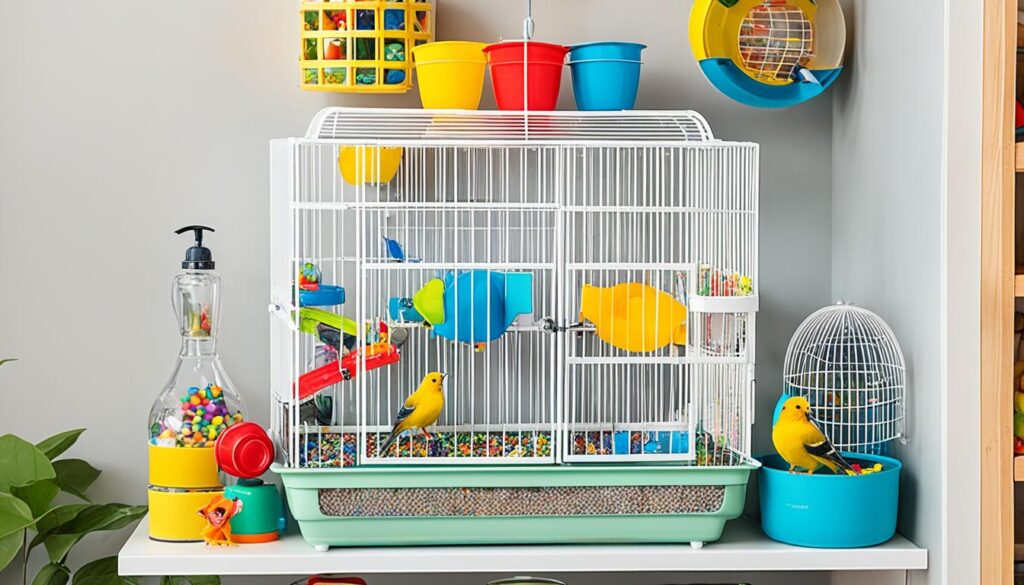
“Parrots can live from 20 to 80 years, depending on the species, so it’s essential to consider the long-term financial commitment involved in owning one.”
Monthly Expenses for Talking Birds
Owning a talking bird comes with a range of ongoing monthly expenses that pet owners must consider. These costs are essential to ensuring the health, happiness, and well-being of your feathered companion.
One of the primary monthly expenses is food. Parrots, a popular choice among talking bird owners, require a balanced diet of high-quality pellets, fresh fruits, vegetables, and occasional seeds. Depending on the size and species of your bird, monthly food costs can range from $50 to $200 or more.
In addition to food, grooming supplies such as cage liners, perches, and toys are necessary to maintain a clean and stimulating environment for your bird. These items can add $20 to $100 to your monthly budget.
Routine veterinary care, including annual checkups and preventive treatments, is crucial for your bird’s health. Expect to budget $30 to $100 per month for these essential services.
- Food: $50 to $200 per month
- Grooming Supplies: $20 to $100 per month
- Veterinary Care: $30 to $100 per month
Additionally, the cost of maintaining your bird’s environment, such as electricity for heating or lighting and the replacement of cage liners, can range from $20 to $50 per month.
Lastly, keeping your talking bird mentally and physically stimulated is important. Investing in toys and enrichment items can add $10 to $50 to your monthly expenses.
While the exact monthly costs can vary based on the size, species, and individual needs of your talking bird, budgeting for these essential aspects of care will help ensure your feathered friend’s wellbeing and happiness.
Health Care Costs
Like all pets, health care is a vital aspect in the care of your talking parrot. While most parrots only need annual check-ups and veterinary visits to ensure their health and well-being, some parrots may require more frequent routine check-ups, which can cost around $50 to $100 per month. Another important consideration is their grooming, which can range anywhere from $10 to $70 depending on the size of the bird.
Routine Checkups and Grooming
To ensure the well-being of your parrot, budgeting for regular veterinary care and setting aside funds for unexpected medical needs is a prudent and caring approach. Routine checkups, grooming, and potential medications and treatments can add up to $50 to $200 per month.
Medications and Vet Visits
Parrots can be prone to various health issues, and regular veterinary visits are essential to catch any problems early. Emergency vet visits can cost between $300 and $2,000, depending on the severity of the condition. Vaccination costs can range from $30 to $60 per year, and annual check-up expenses can be around $100 to $250.
By understanding the health care costs associated with owning a talking bird, you can better prepare financially and ensure your feathered friend receives the care they need. Budgeting for these expenses is a crucial part of responsible parrot ownership.
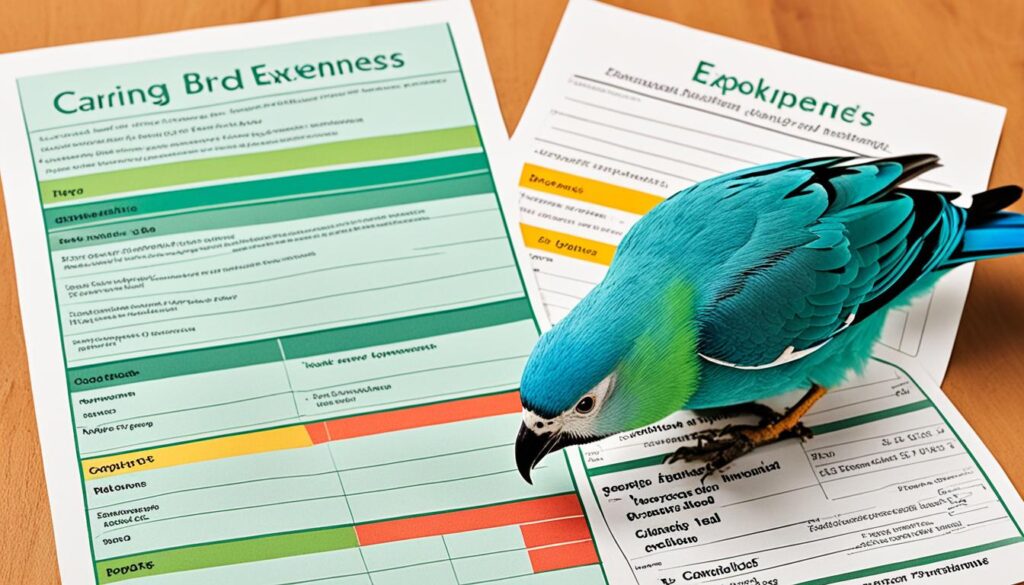
“Investing in your parrot’s health is not just about their well-being, but also about ensuring a long and enriching companionship.”
Food and Dietary Expenses
One of the most significant recurring costs associated with owning a talking bird is the expense of its food and diet. Parrots, like other pet birds, require a balanced and nutritious diet to maintain their health and well-being. This diet typically consists of high-quality pellets, fresh fruits, and vegetables.
The monthly food costs for a talking bird can vary widely depending on the size of the bird and its specific dietary needs. On average, you can expect to spend around $20 to $40 per month on food for a small to medium-sized parrot. Larger parrot species may require a monthly food budget of up to $100.
In addition to the regular food expenses, you may also need to factor in the cost of occasional treats, dietary supplements, and specialized food items. These additional expenses can add $5 to $20 per month to your overall food and diet costs for your talking bird.
It’s important to research the specific dietary requirements of the parrot species you are considering to ensure you can provide the appropriate food and meet their nutritional needs. Investing in a high-quality diet can help prevent health issues and minimize veterinary expenses in the long run.
“Proper nutrition is essential for the health and longevity of pet parrots. Feeding a balanced diet is one of the most important aspects of caring for these intelligent and charismatic birds.”
By understanding the food and dietary expenses associated with owning a talking bird, you can better prepare your budget and ensure your feathered friend receives the nourishment they need to thrive.
Environment Maintenance
Ensuring a clean and comfortable living environment is crucial for the wellbeing of your talking bird. From cage liners and cleaning supplies to toys and enrichment, the environment maintenance costs for talking birds can add up. But these expenses are essential for providing your feathered friend with the best possible care.
Cage Liners and Cleaning Supplies
To maintain a hygienic and odor-free habitat, you’ll need to invest in regular cage cleaning. This can cost around $15 to $45 per month, covering the expenses for cage liners, disinfectants, and other cleaning supplies. Proper maintenance of your bird’s living space is vital for their health and well-being.
Toys and Enrichment
Talking birds are highly intelligent and require mental stimulation to thrive. Dedicating a portion of your monthly budget, around $5 to $30, to toys and foraging enrichment will ensure your feathered companion stays active, engaged, and content. Providing a variety of puzzles, perches, and interactive elements can make a significant difference in their overall happiness and behavior.
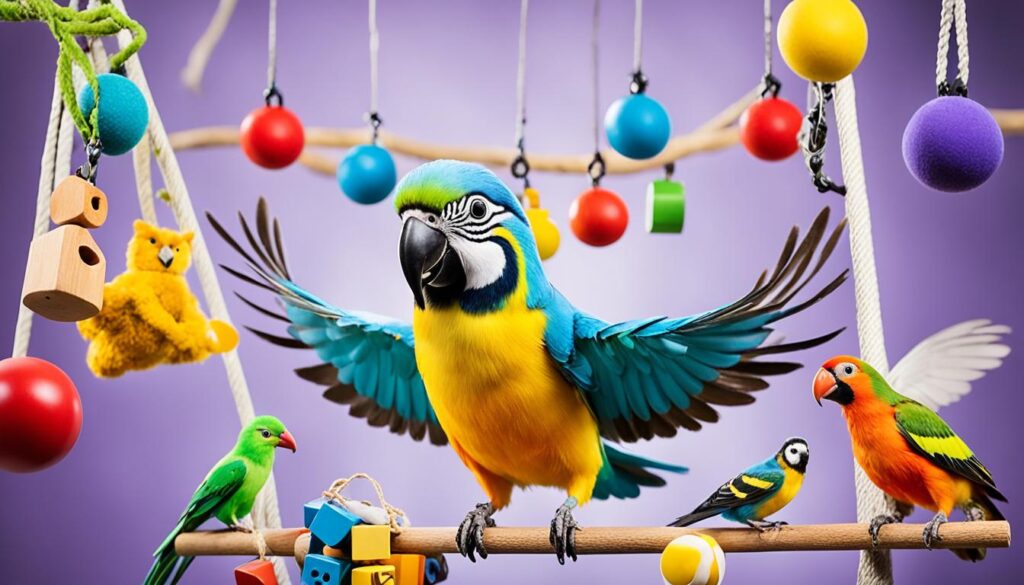
“Proper environment maintenance is essential for the health and happiness of your talking bird. Invest in quality cage liners, cleaning supplies, and a variety of engaging toys to ensure your feathered friend thrives.”
Maintaining a safe, clean, and enriched environment for your talking bird is an ongoing responsibility, but it is well worth the effort. By prioritizing their living space and providing opportunities for mental stimulation, you can create a nurturing and fulfilling home for your beloved companion.
Pet Insurance for Talking Birds
As responsible pet owners, providing the best possible care for our feathered companions is a top priority. Fortunately, pet insurance for talking birds can offer a valuable safety net, helping to cover unexpected medical expenses and ensuring your beloved bird receives the treatment it needs.
The monthly cost of pet insurance for talking birds can vary widely, typically ranging from $10 to $50 per month, depending on the coverage and provider. These policies often include coverage for routine veterinary visits, diagnostic tests, medications, and even surgical procedures. However, it’s crucial to carefully review the policy details to understand the scope of the coverage and any exclusions or limitations.
While the monthly cost of pet insurance for talking birds may seem like an additional expense, the potential savings in the event of an illness or injury can be substantial. By investing in a comprehensive pet insurance plan, you can rest assured that your talking bird will receive the necessary care without straining your finances.
“Pet insurance can provide peace of mind and financial protection for talking bird owners, ensuring their feathered companions receive the best possible care.”
When selecting a pet insurance policy for your talking bird, consider factors such as the provider’s reputation, the range of covered services, and the claims approval process. Additionally, be mindful of any pre-existing conditions or age-related exclusions that may affect the policy’s coverage.
Ultimately, the decision to invest in pet insurance for talking birds is a personal one, but for many owners, the potential benefits outweigh the monthly cost. By protecting your talking bird’s health and well-being, you can focus on enjoying the unique joys and companionship these remarkable creatures bring to our lives.
Factors Affecting the Cost of Talking Birds
The cost of a talking bird can vary significantly based on several factors, including the species and size of the bird, as well as its age and level of training. Understanding these key elements can help prospective owners make informed decisions when bringing home a new feathered friend.
Species and Size
Larger bird species, such as macaws and cockatoos, tend to be more expensive, both in terms of purchase price and ongoing care costs. These majestic birds require larger enclosures, more specialized diets, and often have a longer life expectancy, all of which contribute to their higher price tag. Smaller parrot species, like budgies and cockatiels, are generally more affordable for first-time bird owners.
Age and Training
The age and level of training of a talking bird can also significantly impact its cost. Younger birds that are hand-raised and extensively trained by breeders may come with a higher initial price, but this investment can pay off in terms of better socialization and trainability. Conversely, older birds or those requiring specialized care or rehabilitation may come at a lower cost but require more time and effort to integrate into a new home.
“The cost of a talking bird is not just about the initial purchase price; it’s about the long-term investment in their care and well-being.”
By understanding the factors that affect the cost of talking birds, potential owners can make more informed decisions and budget accordingly to ensure their new feathered family member has a happy and healthy life.
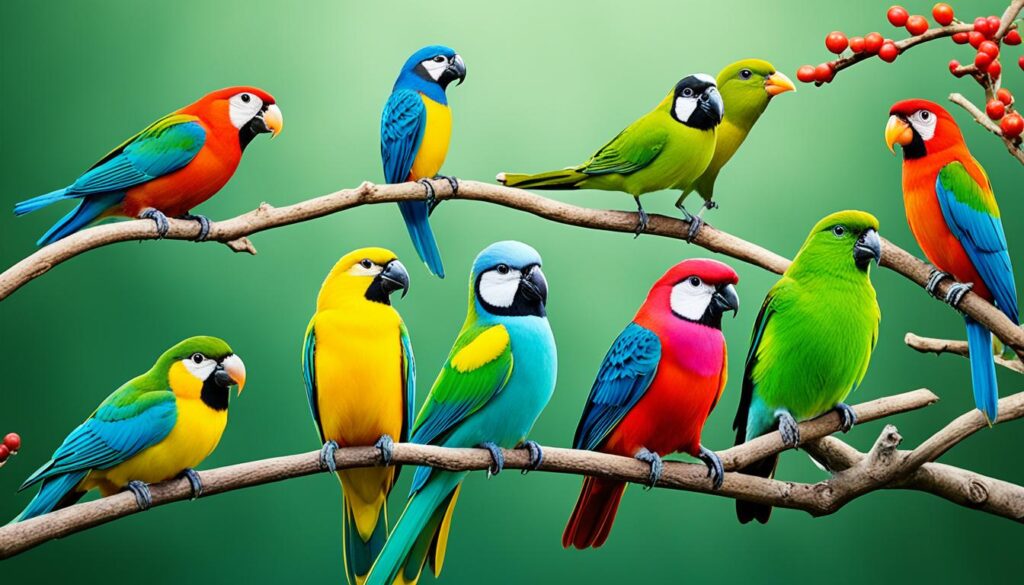
how much are talking birds
The cost of a talking bird can vary greatly, with a wide range of prices to consider. From as little as $20 for a budgie or finch, to upwards of $5,000 for a rare or highly sought-after species like a macaw or cockatoo, the average cost of talking birds spans a vast spectrum.
Several key factors influence the typical price range for these feathered companions. The bird’s species, age, source (adoption vs. breeder), and level of training all play a significant role in determining the final purchase price. While the initial cost may be a major consideration, it’s important to also factor in the ongoing monthly expenses for food, healthcare, environment maintenance, and enrichment, which can easily reach $175 to $665 per month.
Responsible bird owners must carefully budget and plan for the lifetime commitment of owning a talking bird. Whether you’re drawn to the charming vocals of an African Grey or the playful antics of an Amazon parrot, understanding the financial implications is crucial to providing the best possible care for your feathered friend.
“The true cost of owning a talking bird goes beyond the initial purchase price. It’s a lifelong investment that requires careful financial planning and a deep commitment to the bird’s well-being.”
By considering the average cost of talking birds and the associated ongoing expenses, aspiring bird owners can make an informed decision and ensure they are prepared to provide the necessary care and resources for their new feathered companion.
Typical Price Range for Talking Birds
- Budgies or finches: $20 to $100
- Cockatoos or macaws: $2,000 to $5,000
- African Greys: $800 to $3,500
- Amazon Parrots: $400 to $1,500
- Eclectus Parrots: $600 to $3,000
- Indian Ringneck Parakeets: $200 to $500
Remember, these prices can vary widely depending on the specific bird’s age, training, and overall health, as well as the reputation and location of the breeder or seller. Responsible bird owners must consider all the long-term costs associated with providing a loving, enriching environment for their feathered companions.
Popular Talking Bird Species and Their Costs
When it comes to owning a talking bird, certain species stand out for their remarkable vocal abilities and engaging personalities. Among the most popular options are the African Grey parrot and various Amazon and conure parrots.
African Greys
Widely regarded as the most intelligent and talented talkers, African Grey parrots have the ability to learn hundreds of words and phrases. Their purchase price can range from $600 to $2,000, depending on factors like age and breeding. These captivating birds are known for their striking grey plumage and undeniable charm.
Amazons and Conures
Amazon and conure parrots are also renowned for their impressive vocal skills and affectionate nature. With costs typically ranging from $150 to $500, these medium-sized parrots are enthusiastic learners, eager to add new words and phrases to their repertoire. Their vibrant colors and lively personalities make them popular choices among talking bird enthusiasts.
Regardless of the specific popular talking bird species you choose, owning a talking bird is a significant commitment that requires a substantial investment of time, attention, and financial resources. From the initial African grey parrot costs to the ongoing expenses for amazon and conure parrot care, it’s essential to carefully consider the long-term responsibilities and costs associated with these remarkable feathered companions.
“Talking birds are not just pets – they’re intelligent companions that demand our time, attention, and commitment.”
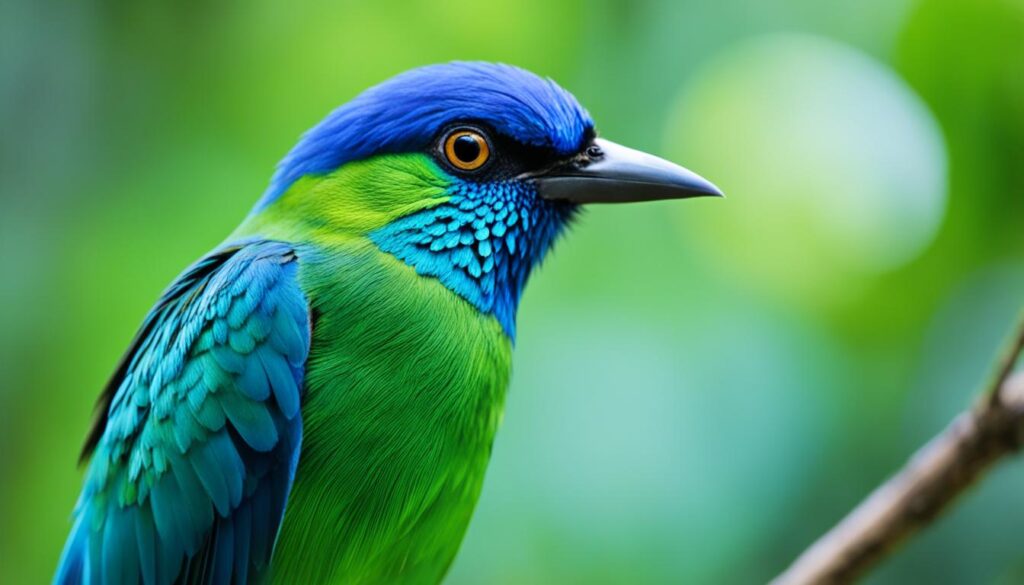
- The average cost of popular talking bird species like African Greys and Macaws ranges from $500 to $2500.
- Rare talking bird species such as Hyacinth Macaws and Cockatoos can cost upwards of $5000 to $15000.
- Talking bird maintenance expenses, including food and veterinary care, can sum up to approximately $50 to $200 per month.
- The lifespan of talking birds can extend from 15 to 80 years, depending on the species.
Budgeting for a Talking Bird
When considering the addition of a talking bird to your household, it’s crucial to carefully budget for both the initial and ongoing costs. Owning a captivating feathered companion requires a significant financial commitment, but with proper planning, you can ensure your new bird’s well-being and provide a loving, long-term home.
Total Monthly Cost Estimates
The total monthly expenses for owning a talking bird can range from $175 to $665, depending on various factors. This cost encompasses the essential elements of caring for your avian friend, including:
- High-quality bird food and dietary supplements
- Regular veterinary checkups and grooming
- Cage maintenance and cleaning supplies
- Engaging toys and environmental enrichment
Long-Term Financial Planning
Talking birds, such as African Greys and Amazons, can live for decades, requiring a lifelong commitment from their owners. When budgeting for a talking bird, it’s essential to factor in long-term financial planning. This includes:
- Preparing for unexpected veterinary expenses, which can quickly add up
- Setting aside funds for the bird’s eventual care, including potential relocation or rehoming costs
- Considering the impact of the total monthly cost of owning a talking bird on your overall household budget and financial goals
“By thoroughly researching and budgeting for the true cost of talking bird ownership, prospective owners can make an informed decision and provide the best possible home for their new avian friend.”
Responsible long-term financial planning for talking bird ownership is crucial to ensuring the well-being of your feathered companion and maintaining a harmonious relationship for years to come.
Conclusion
Owning a talking bird can be a rewarding and enriching experience, but it also comes with significant financial responsibilities. From the initial purchase price to the ongoing monthly expenses for food, healthcare, and environmental maintenance, the cost of caring for a talking bird can quickly add up. Potential owners must carefully consider their budget, lifestyle, and long-term commitment before welcoming a feathered companion into their home.
By understanding the various factors that influence the conclusion on the cost of talking birds, such as the species, size, age, and training level of the bird, aspiring bird owners can ensure that they are able to provide the best possible care and environment for their new avian friend. Additionally, planning for the key takeaways on owning a talking bird, such as budgeting for regular checkups, toys, and other essential supplies, can help ensure the long-term wellbeing and happiness of the bird.
With the right preparation and dedication, the joy and entertainment that a talking bird can bring to a household can be well worth the investment. By carefully weighing the financial and time commitments involved, potential owners can make an informed decision and provide their feathered companions with the love, attention, and care they deserve.
FAQ
What are the one-time costs of bringing home a new talking parrot?
The one-time costs of bringing home a new talking parrot include the purchase price, which can range from for an adoption to ,000 or more for a bird from a breeder. You’ll also need to budget 0 to
FAQ
What are the one-time costs of bringing home a new talking parrot?
The one-time costs of bringing home a new talking parrot include the purchase price, which can range from $20 for an adoption to $3,000 or more for a bird from a breeder. You’ll also need to budget $300 to $1,500 for initial setup and supplies like a cage, food and water bowls, toys, and other essential equipment.
What are the typical monthly expenses for owning a talking parrot?
The monthly expenses for owning a talking parrot can range from $175 to $665 per month, including costs for food ($20 to $100), healthcare ($50 to $200), environment maintenance ($15 to $75), and enrichment ($15 to $60).
What health care costs should I consider for my talking parrot?
Health care costs for talking parrots include routine check-ups ($50 to $100 per visit), grooming ($10 to $70 per session), and potential medications or treatments. Budgeting $50 to $200 per month for health care is recommended to ensure your parrot’s well-being.
How much does it cost to feed a talking parrot each month?
The monthly food costs for a talking parrot can range from $20 to $40 for a small or medium-sized bird, up to $100 for larger species. This includes high-quality pellets, fresh fruits, and vegetables, as well as occasional treats and supplements.
What are the ongoing costs for maintaining the environment and enrichment for a talking parrot?
The monthly costs for maintaining the environment and providing enrichment for a talking parrot can include $15 to $45 for cage liners and cleaning supplies, as well as $5 to $30 for toys and $10 to $30 for foraging items to keep your parrot mentally and physically stimulated.
Is pet insurance worth considering for a talking parrot?
Pet insurance for talking parrots can be a valuable investment, with monthly premiums ranging from $10 to $50. These policies can help cover unexpected veterinary costs, providing peace of mind and ensuring your parrot receives the necessary care without straining your finances.
How do factors like species, age, and training affect the cost of a talking parrot?
The cost of a talking parrot can vary significantly based on the species and size of the bird, as well as its age and level of training. Larger birds and those that are younger and hand-raised by breeders tend to be more expensive, while older birds or those requiring specialized care may have a lower initial purchase price.
What is the typical price range for popular talking bird species?
The cost of popular talking bird species can range from $150 to $500 for Amazons and conures, to $600 to $2,000 for African Grey parrots, which are widely considered the most intelligent and talented talkers.
How can I budget for the long-term costs of owning a talking parrot?
When budgeting for a talking parrot, it’s important to consider the total monthly expenses, which can range from $175 to $665, as well as plan for unexpected veterinary costs and the bird’s long-term care, as they can live for decades. Careful financial planning and setting aside funds are crucial for ensuring the best possible care for your feathered companion.
,500 for initial setup and supplies like a cage, food and water bowls, toys, and other essential equipment.
What are the typical monthly expenses for owning a talking parrot?
The monthly expenses for owning a talking parrot can range from 5 to 5 per month, including costs for food ( to 0), healthcare ( to 0), environment maintenance ( to ), and enrichment ( to ).
What health care costs should I consider for my talking parrot?
Health care costs for talking parrots include routine check-ups ( to 0 per visit), grooming ( to per session), and potential medications or treatments. Budgeting to 0 per month for health care is recommended to ensure your parrot’s well-being.
How much does it cost to feed a talking parrot each month?
The monthly food costs for a talking parrot can range from to for a small or medium-sized bird, up to 0 for larger species. This includes high-quality pellets, fresh fruits, and vegetables, as well as occasional treats and supplements.
What are the ongoing costs for maintaining the environment and enrichment for a talking parrot?
The monthly costs for maintaining the environment and providing enrichment for a talking parrot can include to for cage liners and cleaning supplies, as well as to for toys and to for foraging items to keep your parrot mentally and physically stimulated.
Is pet insurance worth considering for a talking parrot?
Pet insurance for talking parrots can be a valuable investment, with monthly premiums ranging from to . These policies can help cover unexpected veterinary costs, providing peace of mind and ensuring your parrot receives the necessary care without straining your finances.
How do factors like species, age, and training affect the cost of a talking parrot?
The cost of a talking parrot can vary significantly based on the species and size of the bird, as well as its age and level of training. Larger birds and those that are younger and hand-raised by breeders tend to be more expensive, while older birds or those requiring specialized care may have a lower initial purchase price.
What is the typical price range for popular talking bird species?
The cost of popular talking bird species can range from 0 to 0 for Amazons and conures, to 0 to ,000 for African Grey parrots, which are widely considered the most intelligent and talented talkers.
How can I budget for the long-term costs of owning a talking parrot?
When budgeting for a talking parrot, it’s important to consider the total monthly expenses, which can range from 5 to 5, as well as plan for unexpected veterinary costs and the bird’s long-term care, as they can live for decades. Careful financial planning and setting aside funds are crucial for ensuring the best possible care for your feathered companion.
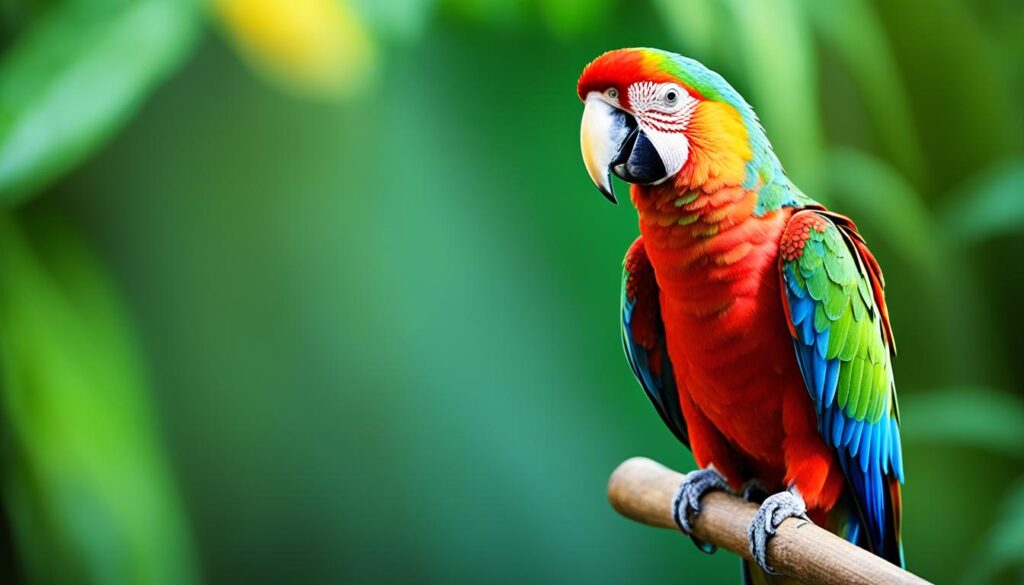

Hi! Do you know if they make any plugins to assist with Search Engine Optimization? I’m trying to get
my blog to rank for some targeted keywords but I’m not seeing very
good success. If you know of any please share. Kudos!
I saw similar art here: Eco wool
Hi there! Do you know if they make any plugins to assist
with Search Engine Optimization? I’m trying to get my blog to
rank for some targeted keywords but I’m not seeing very good results.
If you know of any please share. Thanks! I saw similar art here: Your destiny
I am really impressed along with your writing talents as well
as with the layout for your blog. Is that this a paid topic or
did you modify it your self? Either way keep up the nice high quality writing, it’s uncommon to peer a nice weblog like this one these
days. Leonardo AI x Midjourney!
I’m extremely inspired along with your writing talents and also with the structure for your weblog.
Is that this a paid subject or did you modify it yourself?
Either way stay up the nice high quality writing, it
is uncommon to look a great weblog like this one nowadays.
LinkedIN Scraping!
I am extremely impressed with your writing abilities as well as with the format to your weblog. Is that this a paid subject matter or did you customize it yourself? Anyway stay up the excellent quality writing, it is rare to look a great blog like this one nowadays. I like talkbirds.com ! I made: Madgicx
I’m extremely inspired together with your writing skills
and also with the layout on your weblog. Is that this a paid subject matter or did you modify it your self?
Anyway stay up the excellent high quality writing, it’s rare to peer a nice weblog like this one nowadays.
Lemlist!